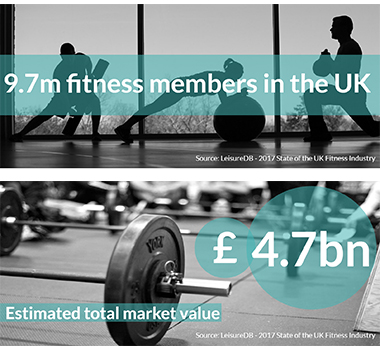2017.06.22
- 調査・研究
© 2020 SASAKAWA SPORTS FOUNDATION
© 2020 SASAKAWA SPORTS FOUNDATION
Mission&Visionの達成に向けさまざまな研究調査活動を行います。客観的な分析・研究に基づく実現性のある政策提言につなげています。
自治体・スポーツ組織・企業・教育機関等と連携し、スポーツ推進計画の策定やスポーツ振興、地域課題の解決につながる取り組みを共同で実践しています。
「スポーツ・フォー・オール」の理念を共有する国際機関や日本国外の組織との連携、国際会議での研究成果の発表などを行います。また、諸外国のスポーツ政策の比較、研究、情報収集に積極的に取り組んでいます。
日本のスポーツ政策についての論考、部活動やこどもの運動実施率などのスポーツ界の諸問題に関するコラム、スポーツ史に残る貴重な証言など、様々な読み物コンテンツを作成し、スポーツの果たすべき役割を考察しています。
2017.06.22
In a time of disputed, faked and contested facts, there is something incredibly reassuring and enduring reading this report on the State of the Fitness Industry in the UK.
It could be the consistent methodology for the past ten years; for example, the definitions for what is a fitness site, a member, the value of the industry and the granularity of openings and closures. Or it could be the confidence of the total market highlights that show the industry to be in rude health. All key metrics on the infographics show gyms, members, market value and penetration rate have all increased.
The trend data shows an industry that is both maturing, innovating and providing the consumer with better experiences than ever before. Before the millennium, the fitness industry suffered from inflated expectations of growth. It then hit a glass ceiling where the all-important penetration rate remained virtually static between 2007 and 2012. This was a period of impoverishment, when the industry was flat, bland and lacked direction. But then it started to change and has moved to this positive state, driven by the ever-expanding low cost sector that has made the industry more transparent.
In 2017, the industry has the widest possible choice of fitness options, where the challenge is to excite the consumer in a product that can change with expectation and demand. The shake out started in 2012 and the upward slope of enlightenment, on the part of both the consumers and operators, is growing year on year and the potential is enormous.

The signs are there that the industry is likely to hit several milestones in 2018. The number of gyms is on course to go over 7,000 for the first, total membership will exceed 10 million, market value to reach £5 billion and the penetration rate should easily surpass 15%.
It may be premature to call the period between 2017 and 2020 “the golden age of fitness” but the growth will only be limited to the imagination of those pushing the boundaries. Comfort can be taken in these official annual audit figures where the total number of sites, members, market value and penetration rate have all increased to new highs. At the same time, opportunities to experience fitness without any boundaries, (for example, using apps, influencers, trackers, aggregators and boutique offerings) have all expanded, helping to push the market in a way the consumer can control.

However, whilst the private sector has opened more clubs than those that have closed year on year since 2012, the public sector saw more closures than openings for the second year in a row. For the first time in five years, the public sector also saw a slight decline in membership numbers. Is this a combination of the Local Authorities’ financial straight jacket and the impact of the private low cost market? With ‘leisure’ being non-statutory, contractors and trusts are seeing operating budgets reduced and zero-based budgeting becoming more common along with paying to operate sites. The dichotomy puts more pressure on fitness budgets which have traditionally been the cash generator. Obviously, the devil is in the detail and the detail is exactly what is in this annual report, http://www.leisuredb.com/publications/ published May 2017.
レポート執筆者

David Minton
Founder, LeisureDB
LeisureDB for the most accurate and insightful data and reporting on the fitness industry.
https://www.leisuredb.com/
Special Advisor, Sasakawa Sports Foundation